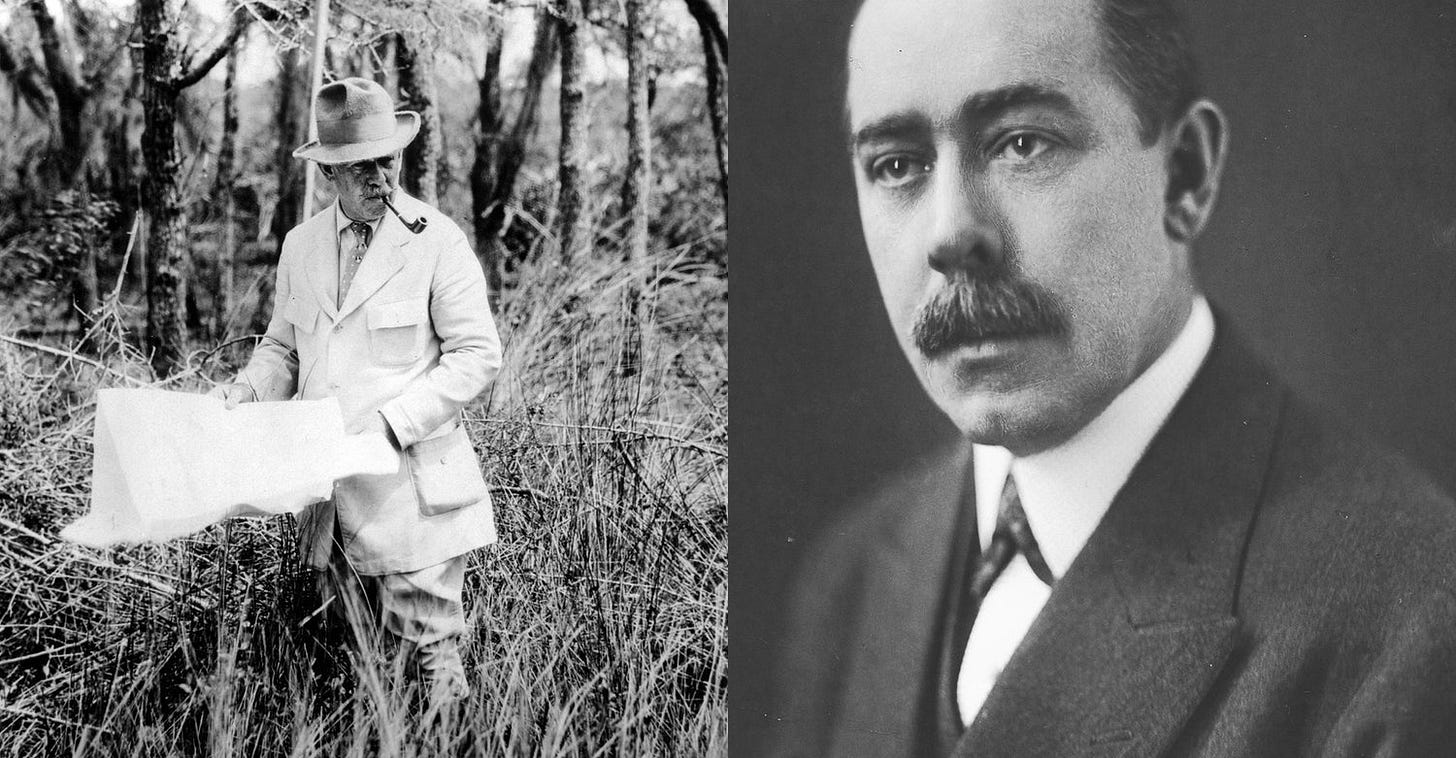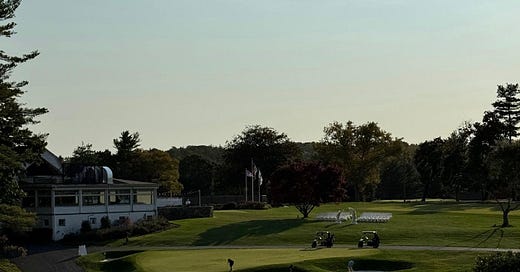Knollwood CC - The Most Impactful Golf Club You’ve Never Heard Of
Few golf courses have seen a greater culmination of golf architecture greats than Pine Valley and Augusta National. The two courses sit atop the list of the United States' best places to play. A third course may have had as great an impact on golf but remains relatively obscure in comparison.
Knollwood Country Club in Elmwood, NY, witnessed a clash between two of golf’s great Golden Age architects. The club, founded in 1894 and originally designed by Lawrence Van Etten, underwent such a significant redesign by A.W. Tillinghast in 1925 that Tillinghast is credited with part of its design. However, Tillinghast would not see the course’s completion, as his services were relinquished in favor of Seth Raynor. Raynor also did not see the course completed, as he passed away less than a year later from pneumonia in 1926. In 1927, Raynor's disciple Charles Banks completed the course.

The two gentlemen could not have been more different. Tillinghast was a bold and opinionated man. Many of the courses credited to him were actually secondary projects, where he was hired to modernize, expand, or heavily overhaul designs. Raynor, an engineer by trade who didn’t play golf, was mild-mannered and methodical. He is known for his strict use of templates—a series of slightly manipulated hole designs that gave golfers a sense of consistency throughout his courses.
“Terrible Tilly,” as he was known, was a hard-drinking tough guy who usually got what he wanted. A colorful story recounted in a 1928 Golf Illustrated article details the construction of San Antonio’s municipal golf course. Apparently, the early clearing of the San Antonio jungle was not proceeding quickly enough, and after a conference with Brown and Lambert, it was agreed that an additional force of fifty men for ten days would be necessary. According to Tillinghast, the mayor said, “Very well, we will have them for you in the morning!” Tillinghast wrote, “The next day, the workforce was comprised of 50 men—not 49 or 51, mind you, exactly 50 prisoners, husky men caught the night before at illegal cockfights and crap games.” Before he left the project, Tillinghast had his nose broken by one of the “shanghaied prisoners” who used the south end of a hickory ax handle to get even.” – The Ghosts of Old Brack
Raynor, having come from a civil engineering background, kept shockingly poor records of his works. Most of his recorded history has come from club documents that hired him for his services and from his mentor, Charles Blair MacDonald. In comparison, Tillinghast has taken credit for holes and courses where there is still doubt about his participation, notably holes 7 and 13 at Pine Valley.
“All Raynor left behind for us to judge him and understand his theories of architecture were the golf courses he designed, expanded, or renovated. The number, now in excess of 100, continues to grow. This year alone, two more courses he designed were rediscovered.” – Bluemound Club History

The two architects did share some opinions. Both used their own versions of template holes. Raynor, a disciple of C.B. MacDonald, would use his playbook and incorporate a mix of the best-described holes from Scotland, including: Short, Alps, Redan, Cape, Eden, Dell, and more. Raynor would work to fit these different hole designs into the shape of the land. Tillinghast, on the other hand, followed the flow of the land using far fewer templates. Tillinghast's templates included: The Great Hazard and Double Dogleg.
“His designs invariably included holes where length was rewarded. His short par fours pay off for the accurate player, while his large greens—some as big as 15,000 square feet—mean putting is at a premium. The well-defined edges of greens and the accompanying swales can direct even slightly misplayed shots into bunkers. To score on a Raynor course, adeptness with the sand wedge is a must.” – Bluemound Club History

Few holes at Knollwood adhere to the traditional Raynor template naming convention. Hole 18, known as Raynor, is credited to him. The long finishing hole is a 473-yard par 4 with a constricted driving area, a ravine on the right, and a fescue-covered hill on the left. The second shot requires carrying a significant hazard—a large pond running diagonally along the left side of the fairway, up to the left front and side of the green. Although named for Raynor, the double dogleg and great hazard resemble Tillinghast's work.
Hole 16 is named Eden. The front-to-back sloping green plays over a harem of bunkers with deep bunkering situated directly behind the green. The 191-yard par 3 plays shorter than its yardage but is visually intimidating.

The formidable eighth hole is an uphill Redan. The 198-yard par 3 has a guarded front with a bunker on the right side. The green slopes from left to right, assisting in feeding the golf ball toward the center. Current watering practices prevent some of the bounce and roll needed to accomplish the Redan’s intentions, so a towering long iron is best to get close to the hole.
The punchbowl green on Hole 15 is a classic Raynor template. A large horseshoe encircles the left side and the right rear of the green. The entrance to the front of the green has elevation, ensuring that a low-ball hit to the surface should rattle and roll into position on the putting surface.
“Let me state here that when I encounter those who are used to extremely large greens, I do not try to tear them away from their predilections, except where the great areas rob greens, reached by short shots, of any virtue. It is well known that I have always favored the comparatively smaller and closely guarded green, but I certainly refrain from injecting my personal feelings into the pictures where I sense that contrary method has been favored. I find the courses where large greens have been favored are gradually cutting them down in size as their futility is recognized,” said A.W. Tillinghast.

Without specific naming conventions, identifying the Tillinghast holes proves more difficult at Knollwood. Hole 5, named “Old Glory,” is a reachable 535-yard uphill par 5. The double dogleg—first to the left, then slightly to the right—with trees guarding the initial left turn and deep bunkering guarding the approach, feels like a Tilly template.
The short par 4, fourteenth hole, has a well-guarded bacon-strip of a green. The 301-yard downhill hole plays shorter than its yardage and would be drivable except for the deep bunkering surrounding the small putting surface. In true Tilly fashion, the green is small.
The 123-yard par 3 19th hole was added to the course in 1928, after a recommendation by Bobby Jones, who said the walk from the 18th green to the clubhouse was too long.

The 19th hole is an enigma. The large green plays like a Raynor, but the lack of template design leans toward Tillinghast. It can be heavenly or hellish depending on pin placement, as the top right corner is heavily guarded by deep bunkering. Neither architect has a history of creating a bonus 19th hole. It is rumored that the creation of the 19th hole occurred in 1928 at Bobby Jones's suggestion. It is unclear if Jones had any role in the hole’s design. Typically called the 19th hole, the bar and grill at Knollwood sits inside a charming Cape Cod-style clubhouse and may have a greater impact on golf than the course itself.
The culmination of the two architects at Knollwood is the second most impactful occurrence at the club. In the late 1920s, Bobby Jones and Clifford Roberts met and spoke in the grill at Knollwood; the subject was Augusta National and eventually The Masters.
“There is no question,” longtime Knollwood historian Frank Cali said. “It happens in every grill room after golf; this is where everyone spills their guts and talks about their plans for the future. … It’s part of club lore. It’s a story that has been passed on for years and years.”

As one of the first 15 USGA clubs, Knollwood was frequented by Ouimet, Jones, and other prominent Golden Age golfers. Roberts, a Wall Street trader, would have reason to be at Knollwood as well. No specific date is given for the meeting of the two, but one could surmise it happened before Augusta National’s groundbreaking in 1931. Knollwood’s 18 holes were completed in 1927, and Jones's suggestion of the 19th hole in 1928 fits within this timeline.
In recent history, the course has changed hands a few times. The Troon Golf Group was chosen to manage the facilities in 2016. In 2017, Knollwood completed a $1.1 million course restoration, returning the course to its roots from 100 years ago, allowing golfers to play the course as Bobby Jones did more than 90 years ago.
In 2021, The Heritage Golf Group took over the club and provided members an option to buy into the club.
For more information on the club: https://www.kccclub.org



